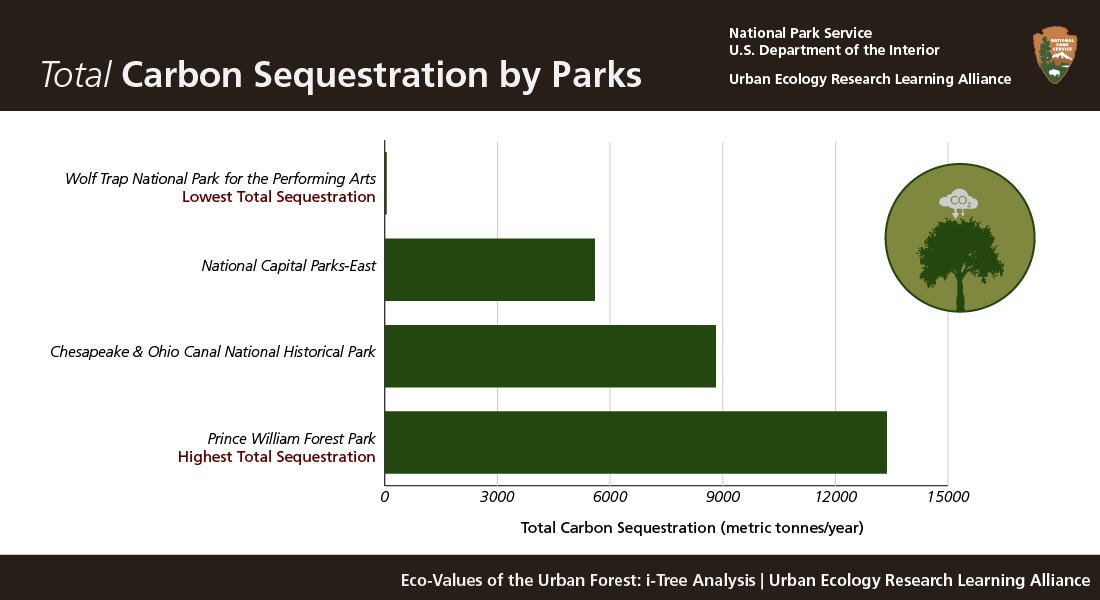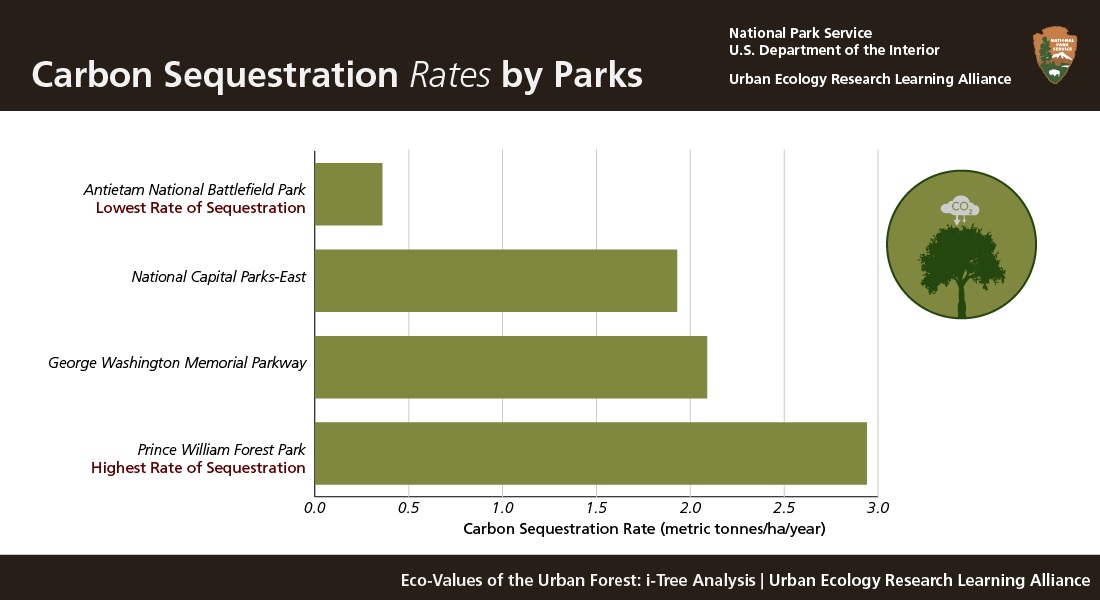Last updated: January 7, 2022
Article
Carbon Storage by Urban Forests

Climate change is an issue of global concern. Urban trees can help mitigate climate change by storing carbon in tree tissue and sequestering atmospheric carbon from the key greenhouse gas, carbon dioxide (CO2).
- Carbon sequestration is the removal of carbon dioxide from the air by plants.
- Carbon storage is the amount of carbon already bound up in the parts of woody vegetation.
Trees reduce the amount of carbon in the atmosphere by sequestering carbon in new growth every year. As a tree grows, it stores more carbon by holding it in its accumulated tissue. The amount of carbon annually sequestered is increased with the size and health of the trees. Open-grown, maintained trees, which are common in urban areas, tend to have less biomass than trees naturally growing in forested areas.
As a tree dies and decays, it releases much of the stored carbon back into the atmosphere. Thus, carbon storage can also be thought of as the amount of carbon that can be released if trees are allowed to die and decompose. Trees can also indirectly influence the amount of carbon dioxide emissions by regulating the temperatures of buildings and thus affecting energy use.
Carbon Storage and Sequestration by NCA Trees
Carbon storage and sequestration benefits are closely tied to the area of the park that is forested and less impacted by a park’s surroundings. In total, the NCA forests analyzed take up about 33.9 thousand metric tons of carbon in new growth every year. To calculate current carbon storage, biomass for each tree was calculated by the i-Tree programs. Carbon sequestration is gross, not net amounts.


Next page: Avoided Runoff
Previous: Air Pollution

References
Ferguson, K. (2017). UERLA Resource Brief: Ecobenefits of National Capital Region Park Trees. Retrieved from https://irma.nps.gov/DataStore/Reference/Profile/2290091.
Garner, J. (2018). UERLA Resource Brief: Quantifying Ecological Benefits of Trees in the National Capital Region. Retrieved from https://irma.nps.gov/DataStore/Reference/Profile/2290092.
Nowak, D.J., Hoehn, R. E. III, Crane, D. E., Stevens, J. C., & Walton, J. T. (2006). Assessing urban forest effects and values, Washington, D.C.''s urban forest. Retrieved from https://www.fs.usda.gov/treesearch/pubs/18406
Tags
- antietam national battlefield
- chesapeake & ohio canal national historical park
- george washington memorial parkway
- harpers ferry national historical park
- manassas national battlefield park
- national capital parks-east
- prince william forest park
- wolf trap national park for the performing arts
- uerla
- rlc
- trees
- urban forest
- forest
- ecosystem services
- park science
- nca
- ncr
- carbon
- climate change
- carbon dioxide
